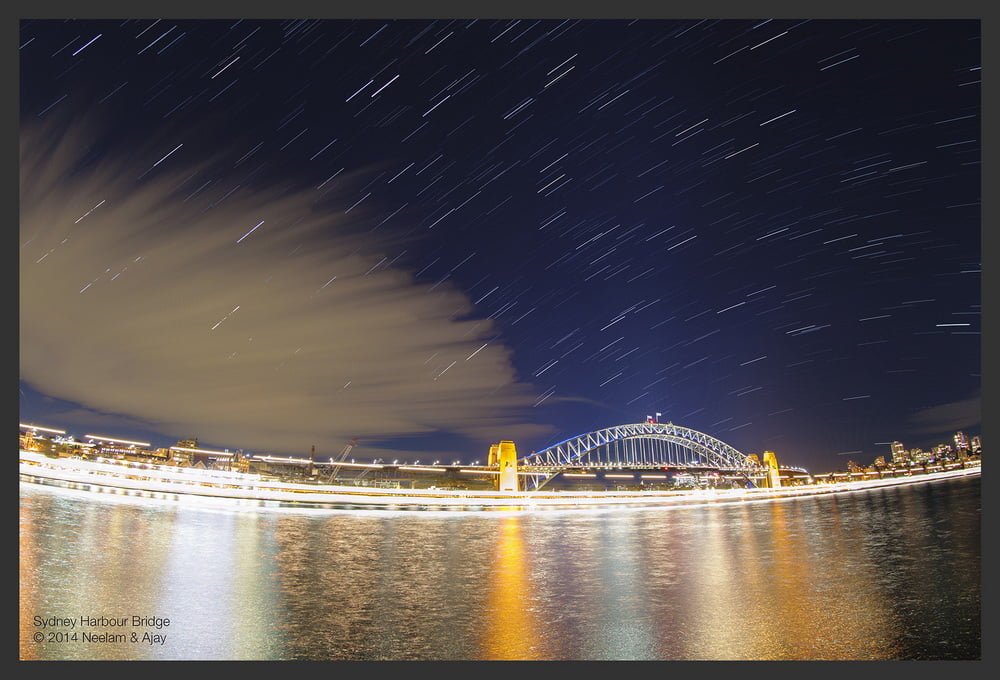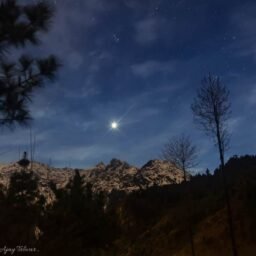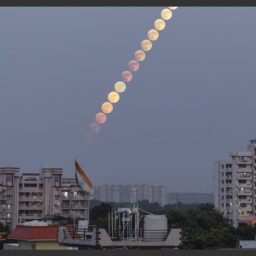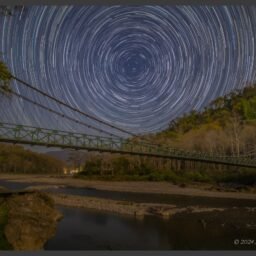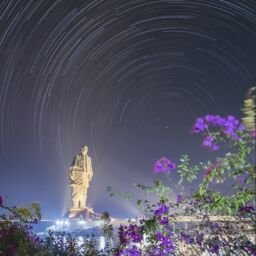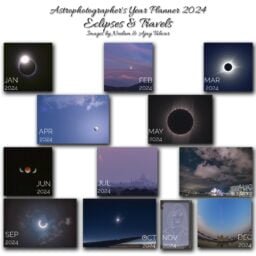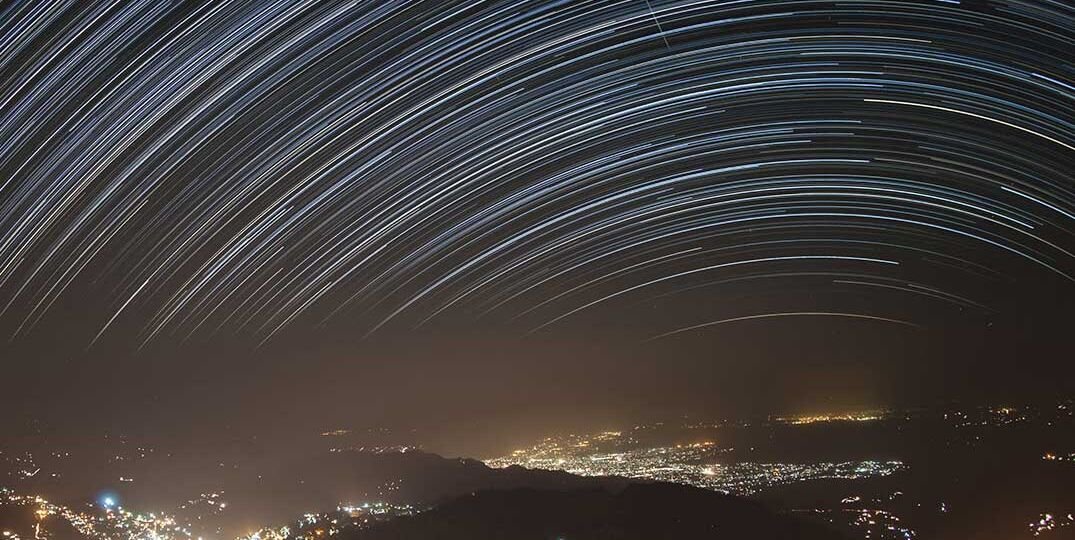
Every photographer, at some point or the other, has thought of capturing one of those hypnotic star trail images. Here is an introduction to star trails and the prerequisites to capture them.
What is a Star Trail?
Many people see a star trail image and wonder ‘Where on Earth can I see this phenomenon?’ To understand a star trail image some explanation is required.
This is not some instantaneous phenomena which can be seen with your eyes. In a normal situation, you can’t see any of the stars in the sky moving, but all the stars are steadily moving across the sky and the camera can capture this movement easily.
The Earth is rotating, once in 24 hours! And the camera can capture this movement in just a minute.
A star trail is a type of photograph that uses long exposure times to capture the apparent motion of stars in the night sky due to Earth’s rotation. A star-trail photograph shows individual stars as streaks across the image, with longer exposures yielding longer arcs.
Duration
The total duration of a star trail image varies quite a bit. A star trail image could be 10-15 minutes long, such as this one (above) from Sydney.
You could also plan to shoot a star trail for about 1-2 hours such as this one (below) from Surkhanda Devi peak looking towards Dehradun.
Sometimes astrophotographers plan an all-night star trail lasting 8-10 hours, such as this one (below) from Devasthal peak, Nainital district.
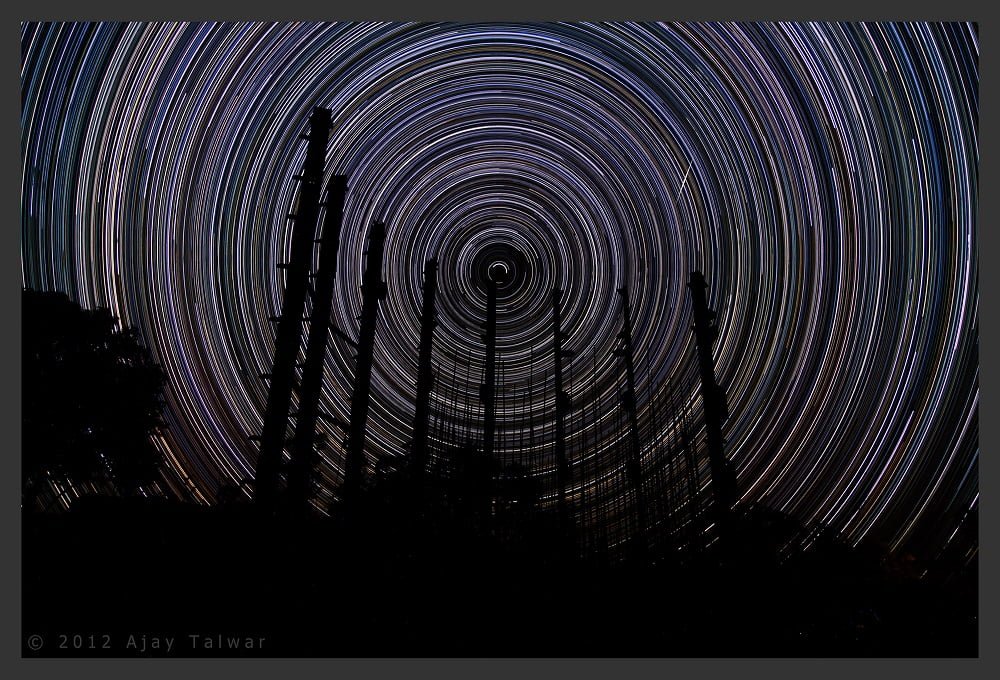
Direction
Changing the direction of your camera while shooting star trails produces dramatically different results. Changing the field of view of your camera also produces varying dramatic effects. Here is a star trail image using a 200mm lens, providing a 10° field-of-view looking towards Eastern direction. The peak is Panchachuli II and the image has been shot from Thamari Kund.
Below is an image which has been shot using a fisheye lens providing a 180° field-of-view. The periphery of the circular image represents the horizon. The entire horizon, from North to East, South and West. It’s a full skydome image.
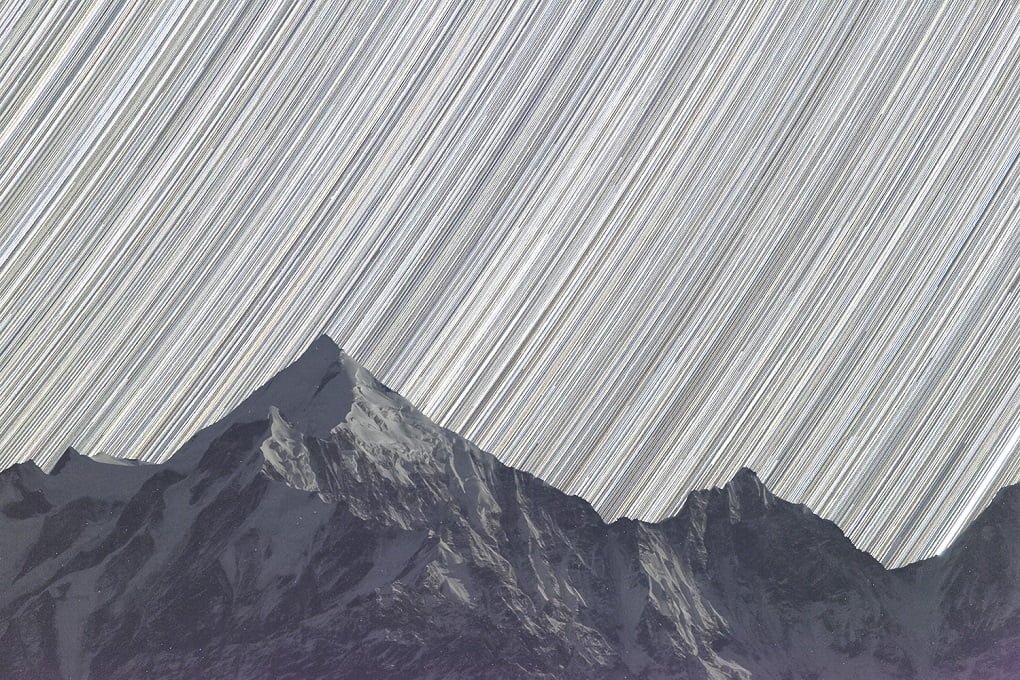

Equipment considerations
Star trail photography can be a simple affair in terms of equipment considerations. Patience is a more abundant requirement. Patience to shoot longer and longer duration of star trails. Recently I was invited to use the Huawei P30 Pro phone for my astrophotography pursuits. I was amazed to learn that it has an inbuilt function to shoot star trails on its own. While Huawei was going through its process to provide me with their instrument I went ahead and purchased a couple of adapters which would allow me to attach the camera phone to a tripod. The importance of a good tripod and adapter was uppermost in my mind.
Here are two images clicked using the Huawei P30 Pro camera phone.
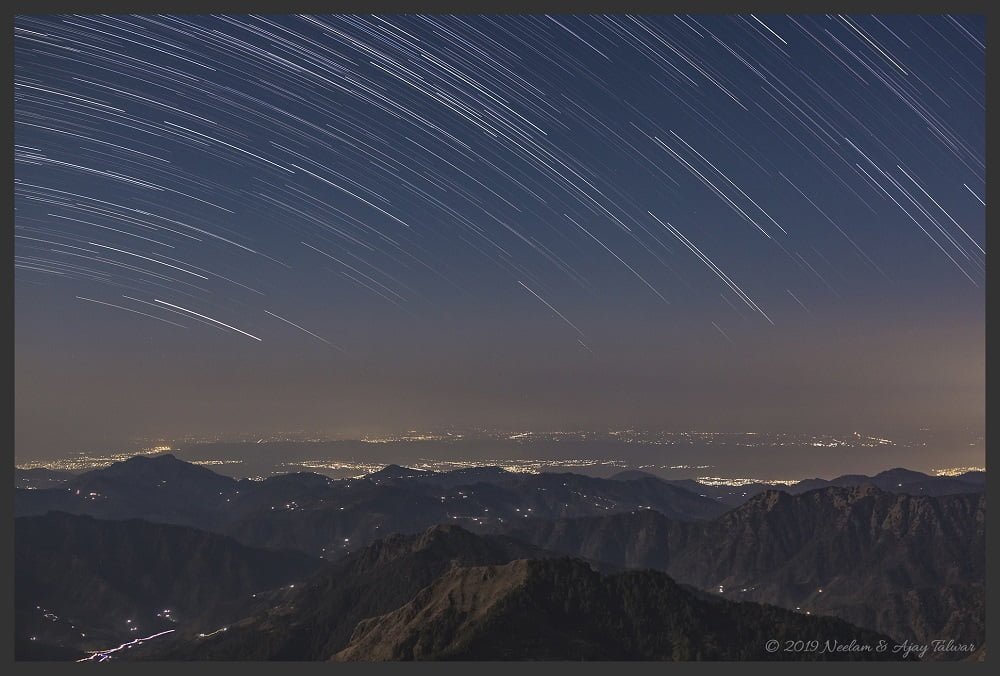
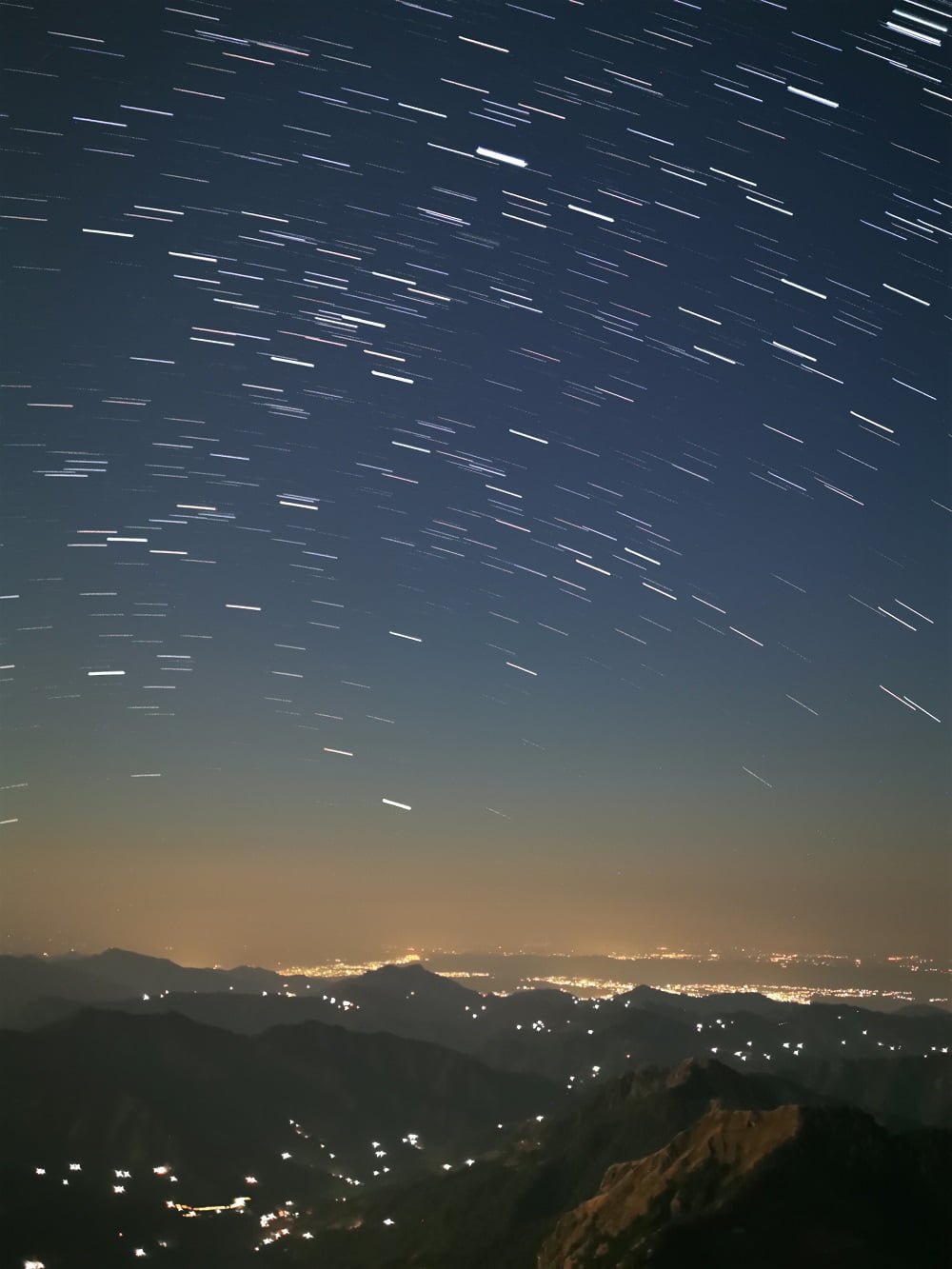
There are a few other smartphones which are currently capable of producing star trail images using their inbuilt special function. You get a completed star trail image right out of the box, with no extra post-processing required from the photographer.
Get a good sturdy tripod. Astrophotography requires a tripod, no matter what kind of astrophotography. The importance of a good sturdy tripod must be stressed. Generally, people do not think of a tripod too much and spare just a minimum amount of rupees for it. You will be wasting that amount, and you will also be wasting a lot of time and effort trying to make that cheap plastic tripod work for you. Get a good sturdy tripod, it will serve you for a long time and produce good results.
Here is a simple checklist of equipment that is needed to photograph a star trail.
Camera
Any camera which is capable of shooting a long exposure is suitable. Examples of cameras that are capable could be the GoPro camera, Ricoh 360×180 camera, point-and-shoot camera, and many others, A DSLR or a mirrorless camera is much suited as it has all the manual features to control and fine-tune the exposure to the maximum. The best feature of a DSLR or a mirrorless camera is that it produces the least noise in low light photography.
Tripod
Get a good sturdy tripod.
Wide angle lens
A wide angle lens is far more suited for making aesthetic star trails. Further, a fast lens such as f/2.0 or f/1.4 is much better. Usually, prime lenses have much better/fast aperture than zoom lenses. Some zoom lenses have a tendency to shift their focal length when pointed upwards towards the sky and need to be taped with masking tape to maintain their focal length. Prime lenses do not have this shifting problem.
Intervalometer
An external wired intervalometer proves to be of immense advantage for making star trails. An intervalometer is a device which counts intervals of time. It is also known as interval meter and interval timer. Such devices commonly are used to signal, in accurate time intervals, the operation of some other device. For instance, an intervalometer might activate something every 30 seconds. In photography, intervalometers are used to trigger exposures. This is often done for a time-lapse series. It may also be used to take or begin taking pictures after a set delay. On their own, Digital Single Lens Reflex or DSLR cameras are limited to 30 second or shorter exposures. An intervalometer can be connected to take long (>30 seconds) or very long exposures (minutes or hours) using the “Bulb” setting. Here is what an intervalometer looks like. AAA size batteries. It has a cord which plugs into the timer port of the camera. Each camera has a different shape timer port and you need to buy an intervalometer for your particular camera model. The real advantage of an intervalometer is that you can program it for a number of exposures.
I do hope this little essay excites you to try making star trails on your own. I will be completing this topic in four parts. The next part will explain how to plan your star trail images.


